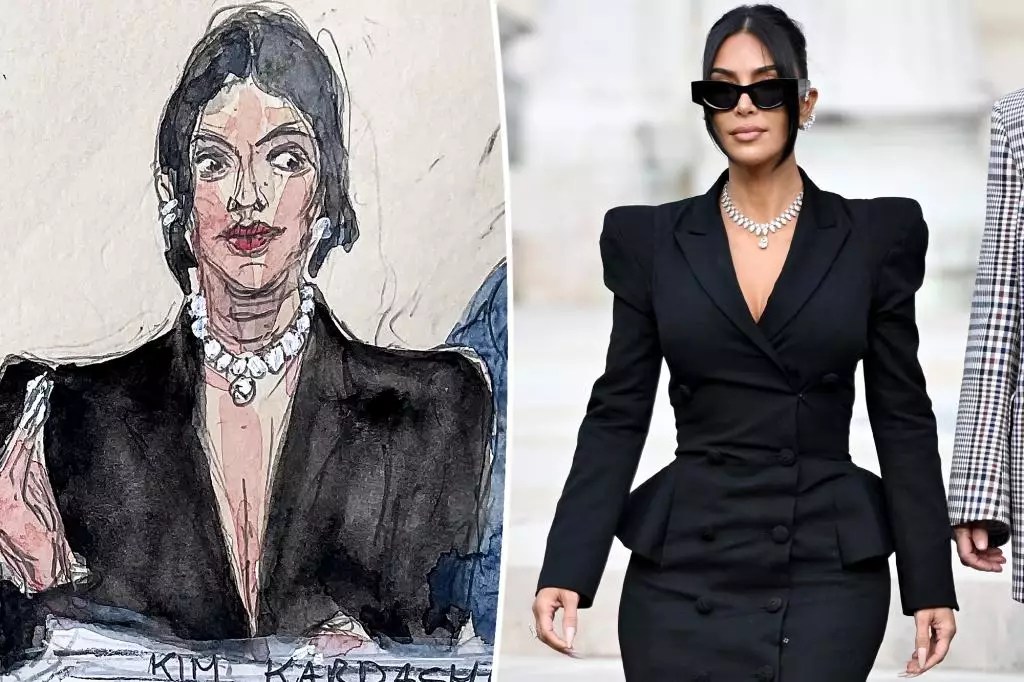The story of Kim Kardashian’s jewelry heist in 2016 is one that encapsulates the intertwining of celebrity culture and crime, unfolding like an episode from a dramatic film. Eight members of the notorious gang, dubbed the “grandpa robbers,” were found guilty by a French court, bringing a long-awaited resolution to a crime that not only shook Kardashian but also captivated global audiences. This case raises troubling questions about security, fame, and the vulnerabilities public figures face in today’s world.
The Heist: A Detailed Account
On that fateful night in October 2016, Kardashian’s life took a terrifying turn as she was thrust into a harrowing ordeal. Stepping into a luxury Paris apartment for Fashion Week, she became an unwitting target. Two robbers, posing as police officers, entered her room, overpowering her with intimidation and violence. They tied her up, leaving her in a state of sheer panic, and proceeded to ransack the space for $10 million worth of fine jewelry. This included her prized possession, a $4 million ring gifted by her then-husband, Kanye West. The rawness of her experience was underscored by her fear for her life—a feeling many in her position could hardly fathom.
Kardashian’s testimony in court painted a visceral picture of the events, enabling many to empathize with the emotional toll of such an experience. She recounted thoughts of despair and survival, truly illuminating the trauma endured during that fateful night. The psychological scars left behind are a testament to the lasting effects of violent crime, regardless of one’s social stature.
A Lenient Verdict and Its Implications
In a surprising twist during the sentencing, the court handed down lesser sentences than one might expect for such a significant crime. The group’s ringleader, Aomar Aït Khedache, was sentenced to eight years but could serve only three due to other time served. This set a curious precedent, as leniency was granted largely because of the defendants’ advanced age, with many in their 60s and 70s having committed the crime. While some may argue that the ages of the criminals should not absolve them of harsher consequences, it highlights the sensitivities surrounding crime motives and circumstances that often complicate justice.
That said, one cannot overlook the message sent by this leniency. Does it imply that a wealthy victim deserves more protection than a less affluent one? Does age equate to a diminished need for justice? These are complex moral dilemmas woven into the fabric of contemporary justice systems worldwide and are particularly resonant in cases involving public figures like Kardashian.
Kardashian’s Response: Grace Amid Trauma
Kardashian’s response to the verdict was one of grace and forward-thinking. Expressing gratitude towards French authorities and affirming her commitment to justice, she focused on personal growth and the fight for accountability. This not only shows her evolution following the life-altering trauma but also her role as a spokesperson for broader justice reform. By sharing her experiences and advocating for the rights of victims, she aims to reshape the narrative surrounding high-profile crime survivors.
While she was not present for the verdict, her previous testimonies emphasized how traumatic events can impact a life richly woven into the fabric of celebrity society. In her statements, she conveys a profound ability to reconcile her past pain with a hopeful vision for the future, addressing issues of trauma resilience and recovery.
The Ripple Effects of the Heist
Furthermore, this infamous heist is not merely a story of robbery; it serves as a cultural commentary on celebrity vulnerability. In a digital age where personal lives are often laid bare, security becomes an essential but ironically overlooked component in the lives of the rich and famous. Kardashian’s experience underscores a pressing need for better safety protocols to protect public figures, as well as an increased awareness of mental health support for victims of crime.
The stigma associated with vulnerability often leaves individuals in fear, unable to share their experiences openly. Yet, Kardashian’s journey appears to challenge that by advocating for a more just and supportive environment. She acts as both a victim and an advocate, intertwining personal healing with systemic change in a world where those two paths often run parallel but rarely intersect.
This case, seemingly solely about a heist, branches into discussions about wealth, safety, justice, and the human experience. As the Kardashians continue to navigate their public personas in the aftermath, it remains to be seen how their narrative will reshape conversations about crime and healing in celebrity culture.


Leave a Reply